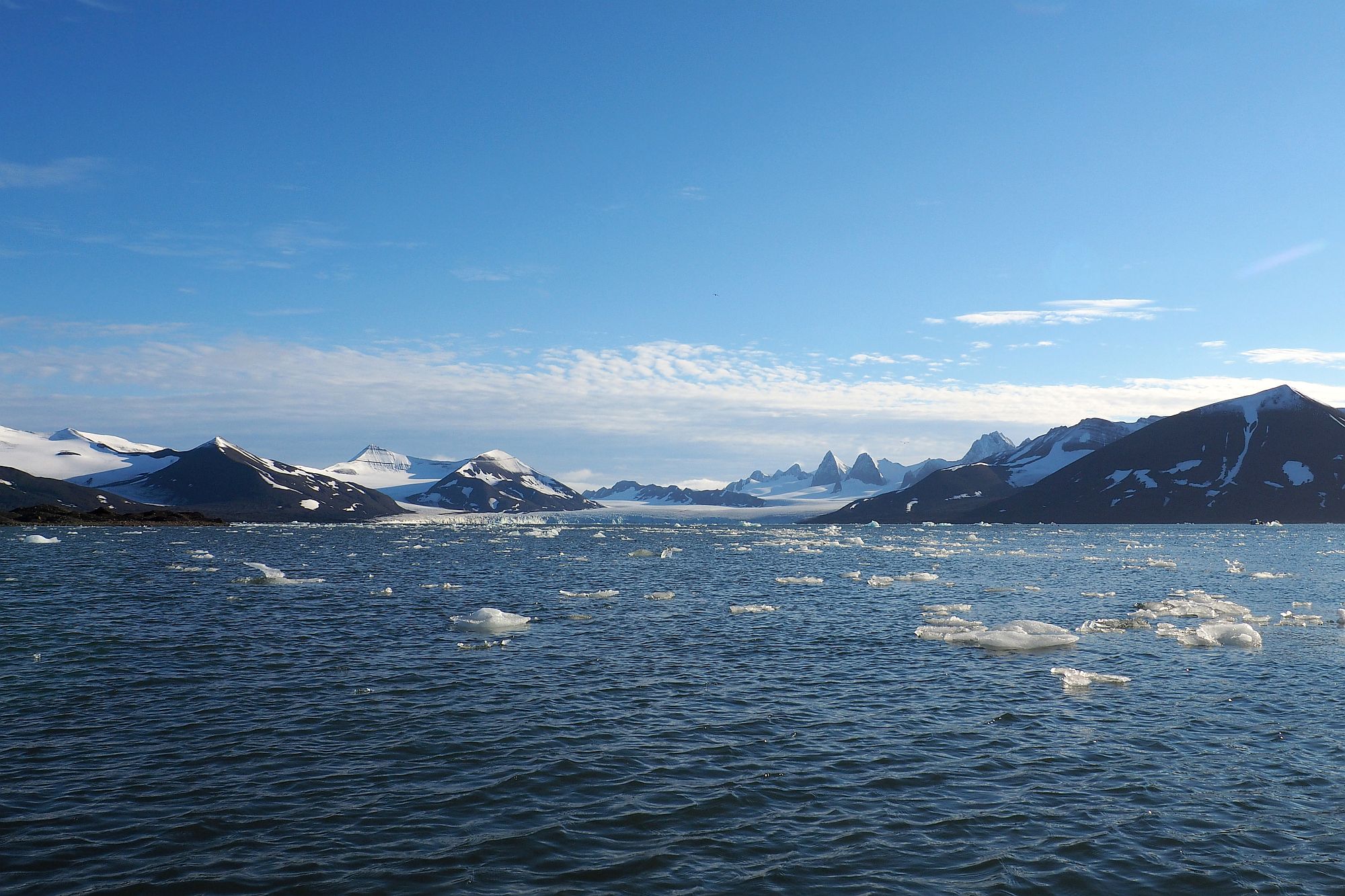The archipelago was probably known of already by the Vikings. Brief mentions of “cold shores” in the area, which is now instantly associated with Svalbard, appeared for the first time in 12th-century Nordic sagas. The thing is, though, that no evidence has ever been found to confirm that the Vikings did indeed set their foot on the islands. Next in line for the discoverer’s title were the Pomors, who lived near the White Sea. According to a theory popular especially among Russian researchers, they reached Svalbard in the 15th century. Once again, however, conclusive evidence to support the claim is simply not there. As a result, the credit for Svalbard’s discovery was taken by Dutch mariner Willem Barents and the officially accepted date of the event is 17 June 1596.
Barents did not roam the treacherous Arctic seas by himself. He was the main navigator and informal leader of an expedition, which combed Europe’s northern edges in search of a new sea route to the Far East. The Netherlands was at the time a great trading and seafaring nation and rich merchants spared no expenses on initiatives which were to grant them easier access to lucrative markets and enhance their wealth. It was them who supported Barents in his exploratory endeavours. Why didn’t they make him a formal leader? Because Barents had somewhat fallen out of favour. His previous two expedition to the Arctic both ended in complete failure! It is therefore more than possible that Svalbard was discovered by chance. Barents and his companions were dealing with more urgent business when, all of a sudden, they caught sight of mountain peaks rising out of the sea.
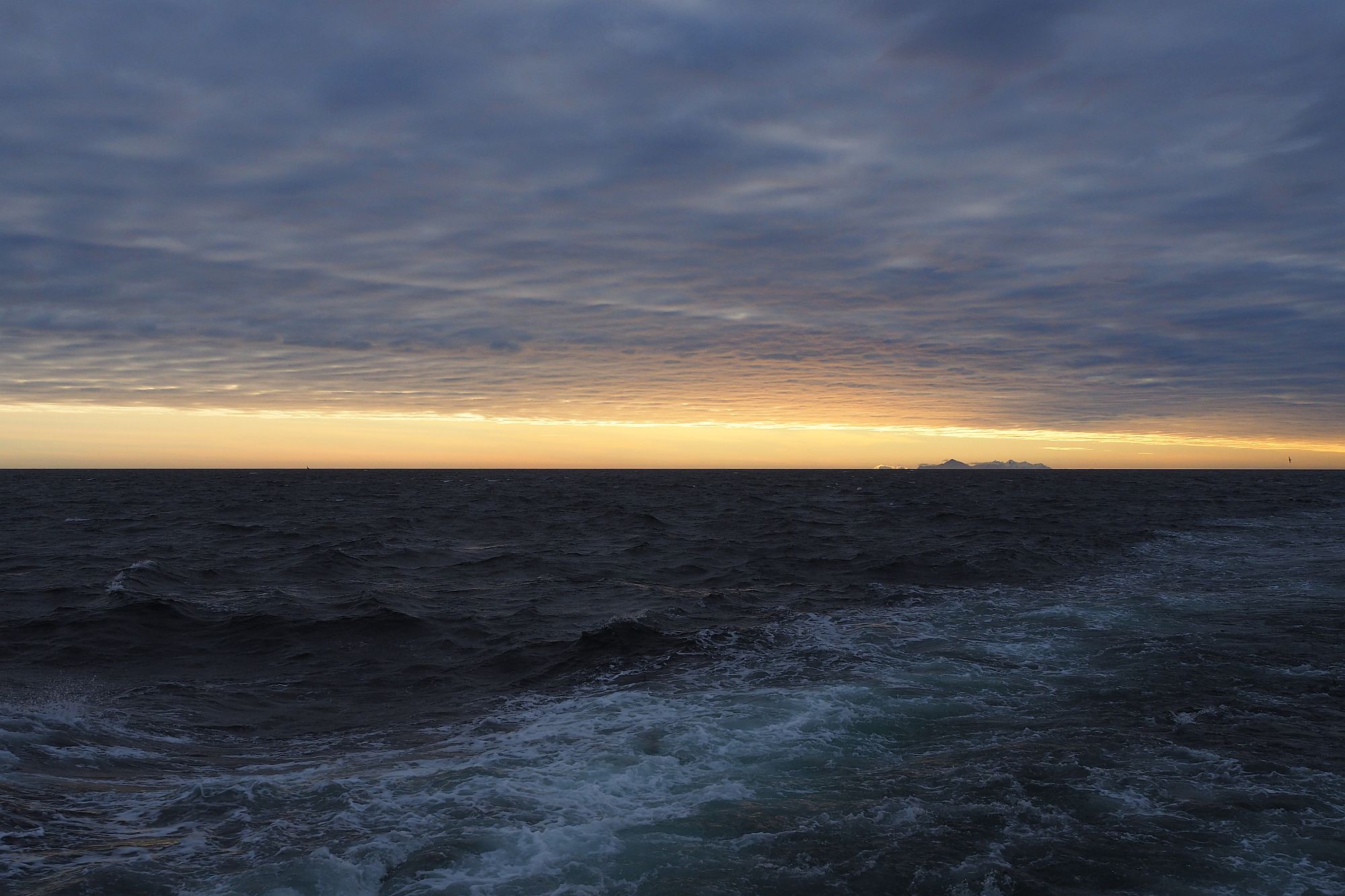
The kind of view that might have caught the eye of Dutch explorers in 1596.
© Barbara Jóźwiak, forScience Foundation
The land turned out to be the north-western edge of the largest island within an archipelago nobody in Europe had ever heard of. After a closer inspection of the coast, Barents dismissed it with a brief note: nothing more than mountains and pointed peaks. And, without drawing too heavily on his creative powers, he called the place Spitsbergen, which means simply pointed (spits) mountains (bergen).
The discovery of Spitsbergen, which is nowadays known as Svalbard, was Barents’s last. A few months later his ship got trapped in ice close to Novaya Zemlya, where in June 1597 the story of Willem Barents came to a tragic end. For the islands he had discovered, however, things were only about to begin. The surviving crew members returned to the Netherlands and although the main aim of their expedition remained unfulfilled, they did attract a widespread interest with spine-chilling accounts of overwintering in the Arctic and – more importantly – an updated map of the polar regions, in which the Svalbard archipelago made its cartographic debut. What made it all even more exciting was the news of whales, which inhabited local waters in truly impressive numbers.
Bad luck had it that the revelations coincided with a sharp increase in demand for whale products. The oil obtained from whale blubber was used, among others, to produce candles, cosmetics, lubricants and paints. Baleen plates, on the other hand, were a precursor of modern plastic and, as such, provided material for the production of corsets, umbrellas, shoe horns and many other everyday items. It is no wonder, therefore, that Europe’s eyes instantly turned to the north.
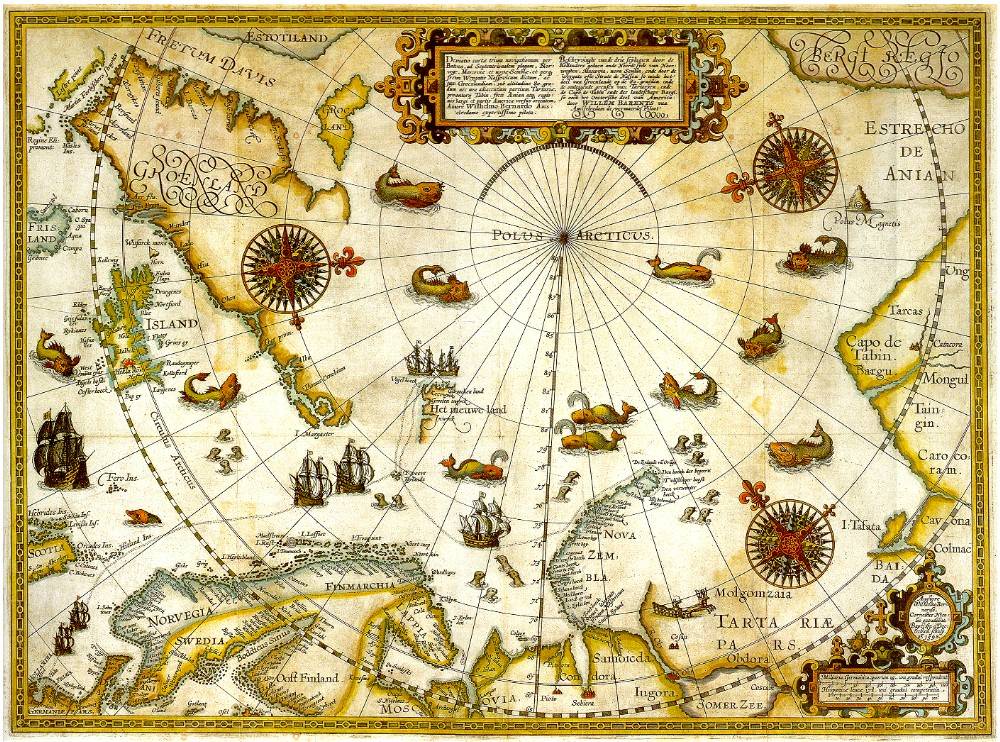
A fragment of a map created by Willem Barents, which made Svalbard (marked as Het Nieuwe Land, or the New Land) enter the European consciousness.
First ships left for Svalbard within just a few years to have a look around. It soon turned out that the area was a real El Dorado for whalers. Why is it then that Europeans waited to start the hunt until the second decade of the 17th century? Because they didn’t have the foggiest idea about whaling, let alone whaling in polar waters. The only exception were – and here’s a surprise! – the Basques, who had been perfecting the craft for centuries. It was their experience that made it possible for systematic whaling industry in Svalbard to take off the way it did.
First whalers reached the islands in 1612 and the coast soon became dotted with whaling stations, blubber ovens and growing piles of whale bones. Apart from the Basques, who were initially a key element of each whaling crew, the main parties in the hunt were the Dutch and the English, although representatives of other European nations also took part in the slaughter. The stakes were high, so angry clashes over whaling grounds were not unheard of, until – for all intents and purposes – the area was split between the two dominant players. The stations were abandoned in mid-1600s, because the unchecked exploitation of coastal waters made hunting close to the shore no longer sufficiently profitable. Following their retreating prey, the men moved to the open sea, where in a mere hundred years they decimated the local population of whales, thus putting an end to large-scale whaling activity in this part of the Arctic.

“Dutch whalers near Spitsbergen” Abraham Storck (1690)
The remains of 50-odd whaling stations scattered about Spitsbergen constitute the earliest traces of human activity on the islands and, at the same time, a significant element of their cultural heritage. Despite their gruesome history, they now please the eye with lush greenery, which the surrounding barren landscape makes all the more striking. It is due to the once ubiquitous whale oil, which proved to be not only an excellent source of income for European entrepreneurs but also of nourishment for Arctic vegetation. It had another useful property too, but let us not get ahead of the story.
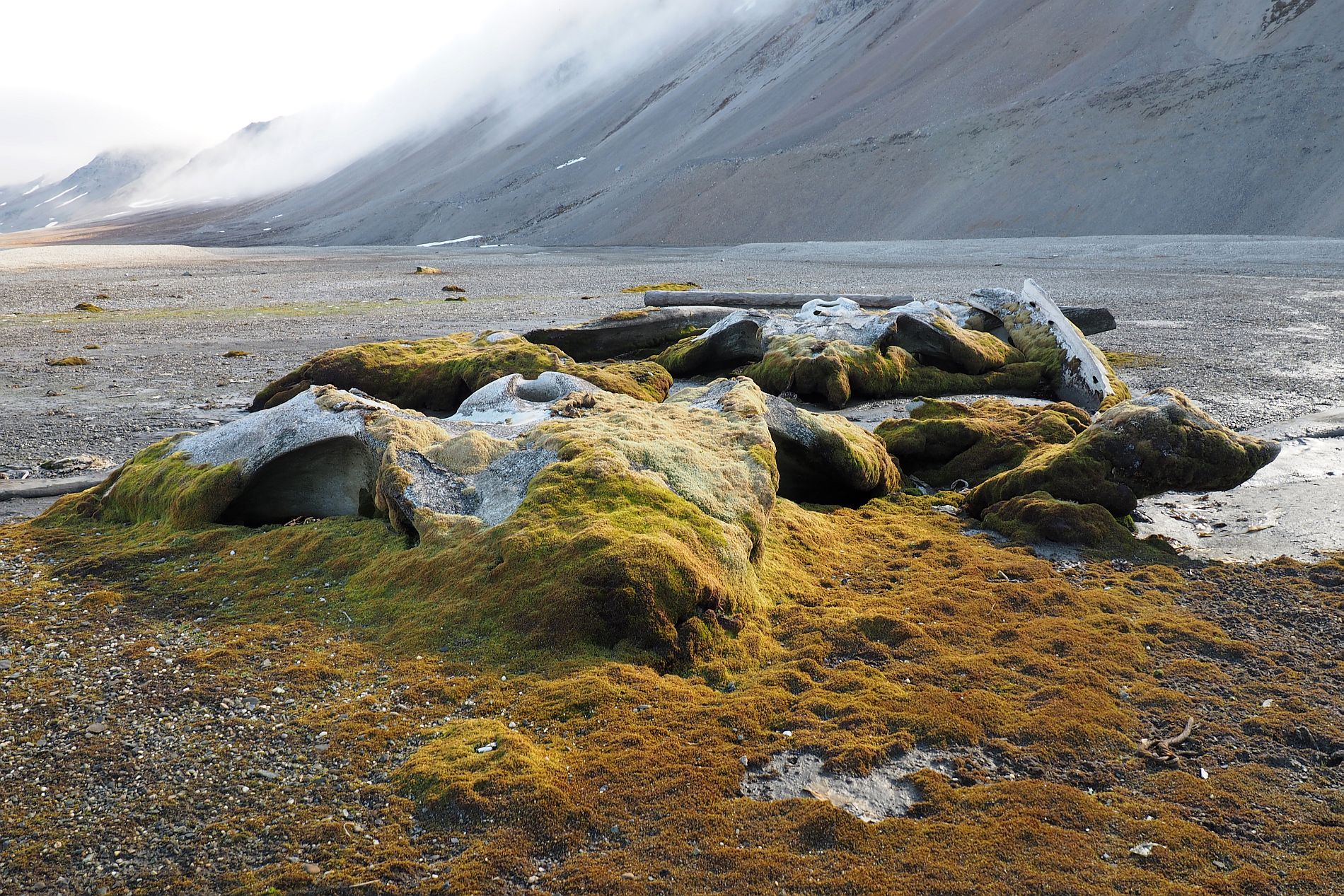
Moss-covered whale skulls close to one of the old whaling stations.
© Joanna Nawrot, forScience Foundation
The clash between European greed and Arctic nature ended tragically not only for many hundreds of whales (the Dutch alone caught approximately a thousand individuals a year!), but also for a good few whalers. Trying to harpoon a whale from a small rowing boat was risky business at best, frigid temperatures made it even more so, and the monotonous diet common at the stations and on board the ships did not do anyone much good. Whalers picked up injuries and suffered from scurvy. And although the risk of the former was part of their job, an effective cure for the latter was right within their reach. It was none other than vitamin C rich whale blubber, which – by a curious irony of fate – the whalers considered inedible.
Because burials at sea were not overly popular and transporting corpses back home was altogether out of the question, the dead were buried in Svalbard, even after technological advances made it possible for whale processing to be conducted entirely on board the ships. As a result, the vicinity of old whaling stations is strewn with graves. They are so numerous that to this day they comprise the largest category of cultural heritage on the islands! And, arguably, the most depressing of them all. Due to the activity of the permafrost, buried bodies were gradually pushed back to the surface, where they lay at the mercy of the elements, animals and – somewhat more recently – excessively eager souvenir hunters.
The end of whaling off the coast of Svalbard did not mean the end of mass hunting in the region. By the time whaling ships finally left the picture, the Pomors (which we mentioned several paragraphs ago) had already been knocking at the door. Contrary to their disputed visits which had allegedly taken place long before the archipelago’s official discovery, the Pomors’ presence on the islands in the 18th and 19th centuries raises no doubts, even though researchers are yet to agree on the details. And although the Pomors were not interested in whale hunting, they did nothing to curb the overexploitation of local resources. Quite the opposite.
Initially, the Pomors hunted mostly walruses, whose tusks – similar to those of elephants – provided material for the production of luxury trinkets. Familiarity with Arctic conditions (the Pomors had long hunted in places such as Novaya Zemlya), a range of clever hunting tricks and a complete lack of scruples meant that the Pomors could deplete the local population of walruses by several hundred individuals in just a few hours! They would have probably slaughtered them all, had it not been for seals, reindeer, Arctic foxes and polar bears, whose pelts were just as available and even more profitable than walrus ivory. Because the most highly priced were pelts harvested in winter, there soon appeared first year-round hunting and trapping settlements, which opened a new chapter in the turbulent story of hunting in Svalbard.
Accustomed to harsh conditions, the Pomors handled Arctic winters exceptionally well. They knew how to avoid diseases, including scurvy, which took such a heavy toll on those who came before them. As a result, Pomor graves are much less numerous than graves of the whalers. Very rare are also Russian Orthodox crosses, which had been commonly erected for both religious and navigational purposes. Some of them fell victim to the weather, some became firewood for cold tourists, and some were intentionally removed. This does not mean, however, that the Pomors left Svalbard without any trace. Most of them overwintered in carefully constructed wooden cabins, equipped with characteristic brick fireplaces. So if you ever come across bits and pieces of red brick scattered on Svalbard’s tundra, chances are high you are in one of over 70 places which used to be home for the Pomors.
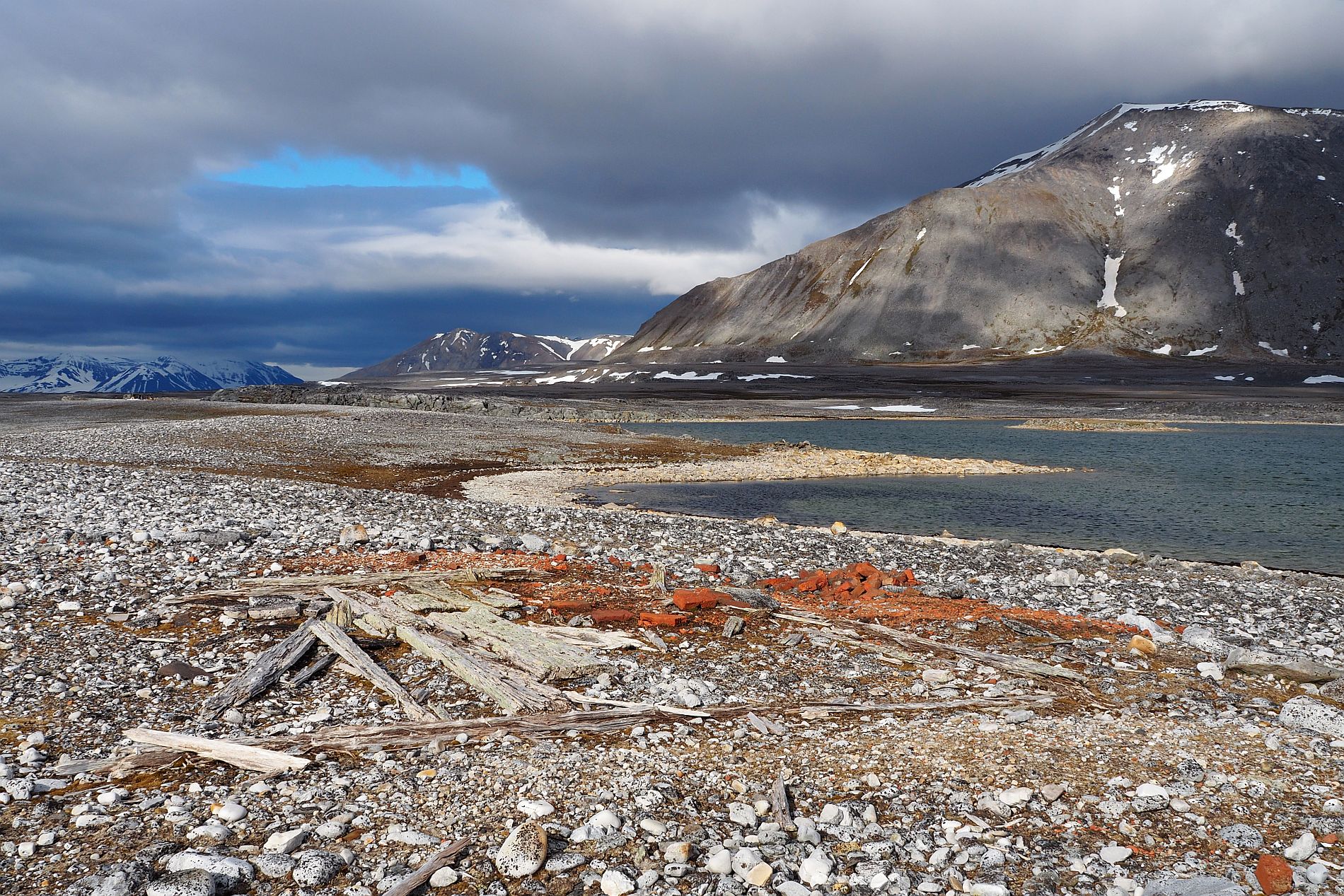
Remains of a brick fireplace are a tell-tale sign of a former Pomor hunting settlement.
© Barbara Jóźwiak, forScience Foundation
At the end of the 18th century, Svalbard was visited by the first group of hunters comprising mostly Norwegians. The few Pomors among them served the role of experts and instructors. Hunting under a close supervision of more experienced colleagues, the Norwegians improved their technique and gained a range of practical skills. Regular Norwegian overwinterings began in the second decade of the 19th century, when due to political turmoil in the Russian Empire the Pomors started to withdraw from the archipelago. The Norwegians were gradually taking over until, in the early 1850-ies, it was only them and the wildlife, which – in line with the hunting trends set by the 17th-century whalers – they slaughtered without mercy.
The hunting grounds soon became networks of wooden cabins and ingenious traps, whose routine inspections set the rhythm of trappers’ everyday life. And although no trace is left of the paths they followed day in and day out, the remains of trapping implements are a fairly common sight in Svalbard, and several of the cabins are still doing very well.
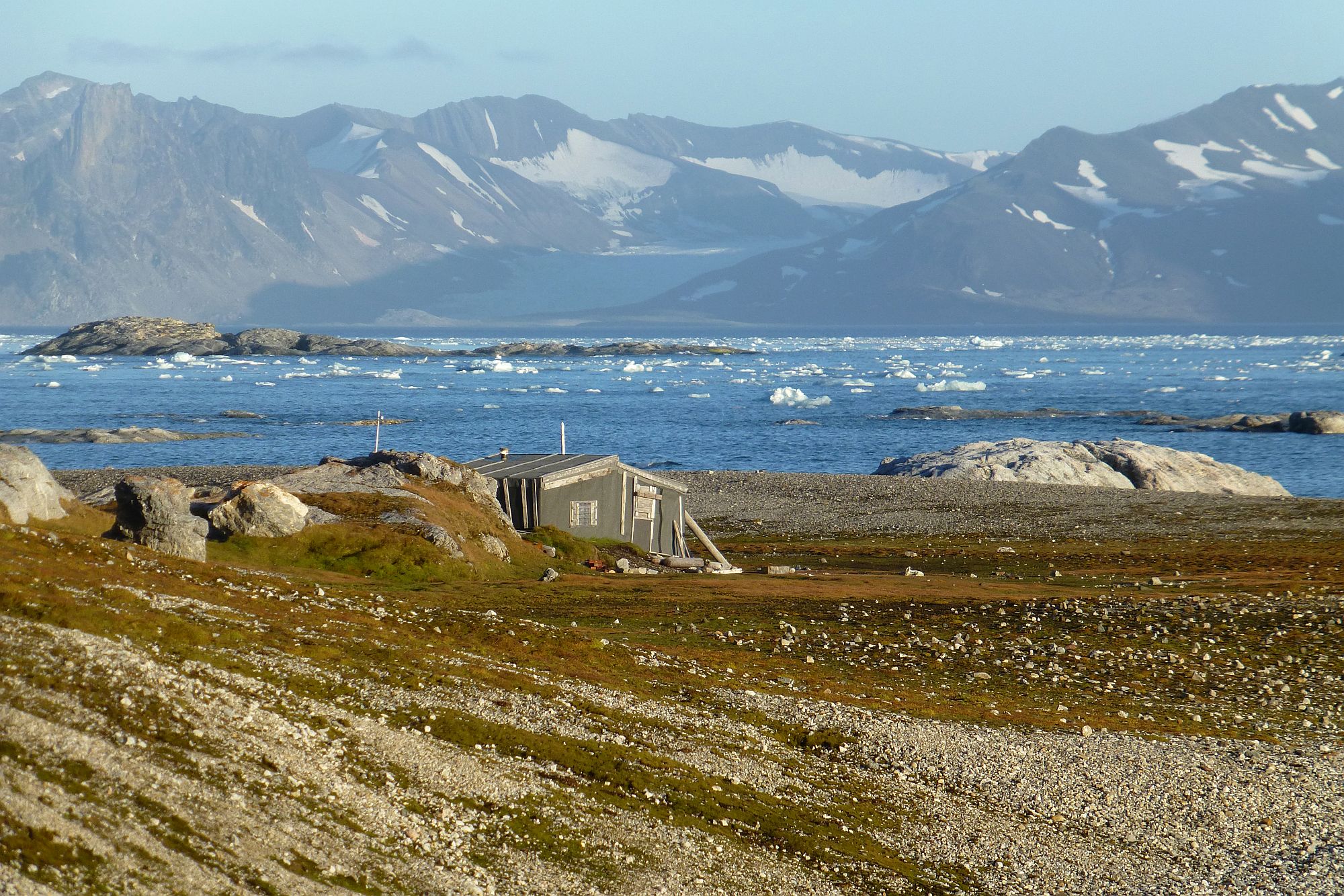
One of the best kept trapper’s cabins in Svalbard.
© Barbara Jóźwiak, forScience Foundation
Even though the Norwegians usually overwintered on their own, technological advances meant that their effectiveness increased to the point where a number of local species gradually found themselves at the brink of extinction. Suffice it to say that legendary Norwegian trapper Henry Rudi is known to have shot more than a hundred polar bears in a single season! Even if we assume that his fellow trappers were no match for Rudi in terms of effectiveness, he was still but one of a few hundred trappers active in Svalbard in the first half of the 20th century.
The first whiff of change with respect to wildlife exploitation came in 1920 in the form of the Spitsbergen Treaty, which laid the foundation for environmental protection in Svalbard. The first species to become protected was the Svalbard reindeer in 1925, and three years down the line the hunting of ptarmigans, geese and Arctic foxes became strictly regulated. In 1952 the protection scheme was extended to include the walrus. Hunters and trappers, however, were still going strong. A real turning point occurred in 1973, when – in one go – twenty conservation areas, covering over 100 000 km2 were established within the archipelago. A total ban on polar bear hunting was also introduced on that occasion, putting a definite end to three and a half centuries of commercial hunting, which had cost the lives of tens of thousands of local animals and forever transformed the face of Svalbard.

Nowadays Svalbard has strict legislation to protect the polar bear.
© Barbara Jóźwiak, forScience Foundation
Sources:
- Arlov, T. B. (2006), “The Discovery and Early Exploitation of Svalbard. Some Historiographical Notes”
- Hultgreen, T. (2010), “When did the Pomors come to Svalbard?”
- Kruse, F. (2016), “Is Svalbard a pristine ecosystem? Reconstructing 420 years of human presence in an Arctic archipelago”
- Madsen, L. S. (2013), “Whalers prepared for death”, ScienceNorway.no
- Prestvold, K. (2015) “Svalbard’s History”, Norwegian Polar Institute: Cruise Handbook for Svalbard
- Spitsbergen | Svalbard: Spitsbergen information
- Svalbard Museum: Culture and History

The article was written as part of EDU-ARCTIC.PL project, funded by the Polish Ministry of Science and Higher Education (DIALOG programme).


